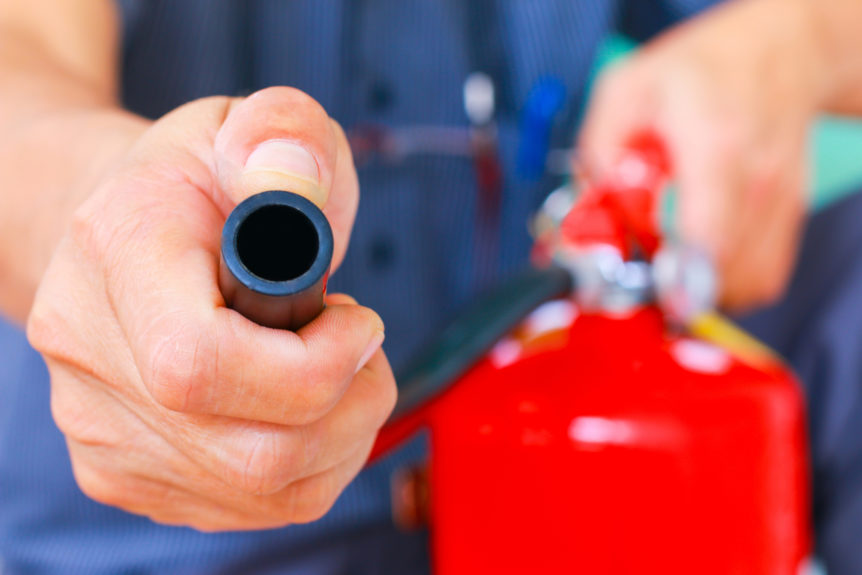Fire extinguishers are a lot like emergency services — you don’t take much notice of them until you need them. After all, they’re in almost every building you pass through on any given day. Chances are, each day, you walk by dozens without knowing it.
But do you know how to use one should the situation arise? Surprisingly, many don’t.
According to FEMA’s website, roughly 1,345,500 building fires occur on a yearly basis. These fires cause billions of dollars in damages and thousands of deaths. Knowing how to effectively react in a dangerous situation could be all it takes to save your life and the lives of those around you.
Make sure you’re prepared for an emergency by reading this guide on how to properly use a fire extinguisher.
Make Sure You Have The Right Tool For The Right Job
If you’ve never interacted with a fire extinguisher, you may not realize that there are actually different types of extinguishers, each designed to fight a different type of fire.
They’re classified as followed:
- Class A: standard flammable solids (paper, wood, etc.)
- Class B: liquids and gasses
- Class C: electrical fires
- Class D: flammable metals
- Class K: grease and oil fires
Make sure your home or building is equipped with the right extinguisher in the right location. It could make all the difference.
It’s important to remember that the properties of certain fire extinguishers could, in the worst-case scenario, exacerbate or grow the fire. For example, using a class A extinguisher on a fire better suited for a class K extinguisher could inadvertently cause this grease/oil-based fire to grow.
Find The Right Placement
Where you fight a fire matters as much as how you fight it.
It’s always a good idea to keep fire extinguishers in an easily-reachable spot like an exit. That way, you can safely use the extinguisher without worrying about the fire cutting off your escape route.
When you engage a fire, grab the extinguisher and stand with your back towards the nearest exit. It’s important that you don’t stand too far away from the door in case of a sudden change in the fire pattern (this means no more than ten feet away from your exit at most).
If the fire is on the opposite side of the room from where you’re standing, it’s imperative you evacuate without attempting to put it out. While trying to destroy the flames might seem like a tempting idea, it’s an incredible risk. Remember: fire doubles every 60 seconds, so unless the flames are close to you and putting you in immediate danger, put your life first and get out of the building while you can.
Objects and buildings are replaceable, but you’re not. If you use an extinguisher, stick near an exit at all times.
Memorize The P.A.S.S. System
Now let’s talk about how to operate fire extinguishers in a safe manner.
You’ll want to follow what’s known as the PASS system. This easy-to-follow acronym is your complete guide to fire extinguisher safety.
‘P’ stands for “pull the pin“. The pin is intentionally difficult to pull out (to avoid accidentally loosening), so it’ll take a bit of effort to do so. It should take a few seconds at most to dislodge.
‘A’ stands for “aim the nozzle“. Point the nozzle directly at the fire.
‘S’ stands for “squeeze the handle“. The standard extinguisher packs quite a bit of force, so be prepared for this by squeezing in a slow manner.
‘S’ stands for “spray“. With the handle gently squeezed, spray the extinguishing contents onto the fire. Make sure to spray an even coat, because it doesn’t take much for a fire to roar back to life.
Knowing How To Use A Fire Extinguisher May Save Your Life.
Congratulations, you now know how to use a fire extinguisher! Remember what you’ve learned in this post, as this information may be very valuable to you someday.
Everyone deserves to be safe. Whether that means a safe workplace or a safe living space, Crisp-LaDew wants to help you stay safe.
Get in touch with us to learn about our robust security and safety offerings as well as our maintenance packages.

